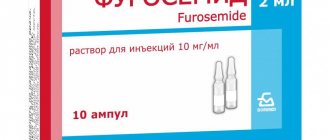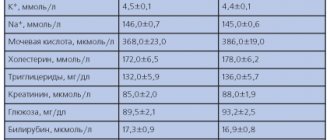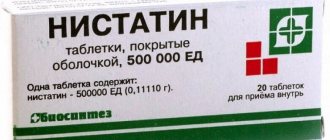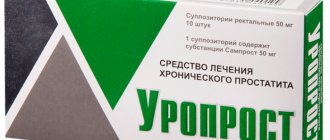Release form and composition
Ozokerite is a hydrocarbon often called rock wax and has a petroleum-like odor. Under natural conditions, the substance can vary from pale yellow to brown in color and have a varying consistency from waxy to solid.
Medical purified ozokerite has a dark brown or black color and becomes elastic when heated to 45-48 °C. The composition of ozokerite is presented:
- Paraffin;
- Ceresin;
- Mineral oils;
- Petroleum resins;
- Asphaltenes and other substances.
The drug is sold in tiles weighing from 2 to 10 kg.
Contraindications and side effects
Paraffin should not be used in the initial, acute stages of the disease. During pregnancy. For chronic and acute periods, use caution and under medical supervision.
Ozokerite is contraindicated for tumor lesions of any stage and formation, stomach and intestinal ulcers, pathologies of the heart and pancreas, tuberculosis, stones in the bladder and kidneys. In all cases where there is or is possible bleeding.
Treatment with mountain wax is prohibited for diabetes and epilepsy, diseases with inflammatory manifestations on the skin and pyogenic foci.
The main side effects of ozokerite are skin irritation at the sites of application, allergic reactions, and local redness. Particularly severe side effects are possible in the form of nausea, insomnia or deterioration of general condition.
Indications for use
The product is characterized by low thermal conductivity and high heat-holding capacity; thanks to these properties, ozokerite is used in medical institutions for thermal treatment. The drug is used during physiotherapeutic procedures in sanatorium-resort complexes, as well as hospitals and clinics (as one of the rehabilitation agents).
According to the instructions for ozokerite, it is used against the background:
- Chronic inflammatory and metabolic-dystrophic lesions of the spine and joints - arthrosis, spondylitis, arthritis, spondyloarthritis, etc.;
- Diseases of tendons and muscles - myositis, bursitis, osteitis, tendovaginitis, contracture, periostitis, trophic ulcers of the leg;
- Fractures with painful bone callus or with a slow process of bone fusion, scar tissue;
- Lesions of the peripheral nervous system - neuralgia, radiculitis, lumbar ischialgia, neuritis;
- Common chronic diseases in remission - gastritis, colitis, cystitis, urethritis, cholecystitis, pyelonephritis, gastroduodenitis, pleurisy, etc.;
- Primary and secondary infertility, colpitis, vulvitis, parametritis, endometritis, endocervicitis, perisalpingitis, salpingitis, oophoritis (in chronic or subacute form).
Ozokerite is also used for the chronic course of ENT diseases, dental and skin lesions: periodontal disease, catarrhal gingivitis, glossalgia, neurodermatitis, seborrheic eczema and others.
Origin and chemical properties
Ozokerite has been discovered in Scotland, Northumberland, Wales, Ein Humar (Jordan) in the eastern Dead Sea, and in at least 30 different countries.
Ozokerite is a mixture of various long-chain hydrocarbons (from C22 to C53): 85 to 87% of its weight is carbon. It is soluble in diethyl ether, petroleum, benzene, turpentine, chloroform, carbon disulfide and other organic solvents. The properties of ozokerite can be derived directly from the homologous series of alkanes: it is flammable, odorless and tasteless, and also has electrical and thermal insulation properties. The substance is quite resistant to sulfuric acid, bromine and cold nitric acid.
The effect of ozokerite substances on skin health is controversial. Critics argue that the layer of fat prevents the skin from breathing, promotes wrinkles and is deposited in internal organs.
Many natural cosmetics companies avoid adding this substance to their products. However, dermatologists and chemists cannot fully confirm the harmful effects of the substance on the skin. Scientists emphasize the almost unlimited durability of ozokerite, low cost and good compatibility with skin.
Shelf life – no more than 5 years. Storage conditions: away from the child and at room temperature.
Contraindications
The use of ozokerite, according to the instructions, is not recommended if:
- Decompensation of the cardiovascular system;
- Hypersensitivity to the product;
- Ulcerative defects of the gastrointestinal tract;
- Neoplasms (of any origin);
- Tuberculosis;
- Dystrophy;
- Liver cirrhosis;
- Feverish conditions;
- Severe form of hypertension;
- Emphysema;
- Urolithiasis;
- Bronchial asthma;
- Inflammatory skin lesions;
- Cholelithiasis;
- Pancreatitis;
- Thyrotoxicosis;
- Hepatitis A;
- Glomerulonephritis;
- Gangrenous forms of obliterating endarteritis;
- Severe liver damage;
- Acute and subacute thrombophlebitis;
- Epilepsy;
- Diabetes mellitus.
The use of ozokerite is also contraindicated during pregnancy, menstruation, gynecological diseases with the threat of suppuration, bleeding (existing or possible) from the gastrointestinal tract. The use of the drug is also not recommended for any lesions in the acute phase or during periods of exacerbation of chronic diseases.
Application of ozokerite
The use of mountain wax is common in two areas: cosmetology and medicine, and less often in industry.
In cosmetology
Paraffins are widely used in cosmetology. Thus, ozokerite applications accelerate metabolic processes in the subcutaneous tissue due to biologically active ozokerite compounds. The latter is used as a component for the preparation of creams and ointments for the care of the skin of the face, hands, and body.
In addition to accelerating the regenerative abilities of the epithelium, the product improves immune defenses, protecting against inflammation and skin lesions.
In medicine
For medical purposes, ozokerite is a very valuable remedy, which is the basis of one of the methods of therapy - ozokerite therapy.
The high specific melting point and low thermal conductivity allow the use of paraffin in several medical areas. Ozocerite therapy has gained the greatest popularity in the treatment of:
dystrophic and nervous diseases of the musculoskeletal system:
- arthritis,
- arthrosis,
- myositis,
- osteochondrosis,
- consequences of injuries.
- radiculitis
- neuritis;
inflammatory processes of the acute phase of development:
- in dermatology: ulcerative lesions;
- furunculosis;
- bedsores;
- cystitis;
- cholecystitis;
It has been proven that ozokerite therapy is more effective than other methods of paraffin therapy.
Directions for use and dosage
According to the instructions supplied with ozokerite, it is used topically using several techniques. When using the drug in the form of compresses, a gauze bandage consisting of 8-10 layers is dipped into a molten substance located in a container intended for this purpose, the ozokerite is preheated in a special apparatus or in a water bath. After wrung out the napkin and cooling to a temperature of no more than 50 °C, it is applied to dry and clean skin of the affected area. A second napkin, prepared in the same way, but with a temperature reaching 70 °C, is placed on the first one without touching the patient’s skin. The top of the compress is covered with oilcloth and a blanket.
When carrying out the cuvette-application method, the molten product is poured into cuvettes lined with wax paper or oilcloth. After the ozokerite has cooled to the required temperature (usually within 48-54 °C), it is removed from the cuvette using oilcloth or paper, and applied together with it to the painful area. A cotton-gauze bandage is applied over the cake or the affected area is covered with a blanket.
Vaginal and rectal tampons made of ozokerite are also used, used in abdominal treatment.
On average, the procedure lasts 20-40 minutes, after each session a rest of about 40 minutes is required. A course of physiotherapy usually consists of 15-20 procedures performed daily or every other day.
Application
Treatment with ozokerite has been successfully used for many years in medicine. Heat reduces muscle tension, stimulates blood circulation and reduces pain. Ozokerite therapy is suitable for the treatment of rheumatic complaints, joint discomfort, muscle pain and scar treatment.
According to the manufacturer's instructions, ozokerite must be heated until a fluid mass is formed.
The melted product from the pharmacy needs to be poured into a bowl. Hands, feet or other parts of the body are immersed in a bowl containing hot wax. Under the ozokerite layer, the temperature gradually increases by 1-2 degrees. Ozokerite opens pores and improves regional blood flow.
It is recommended to slowly dip one hand for about three seconds into a dish with a temperature of 50 to 55 degrees. Patients who are particularly sensitive to heat should immerse their hands very slowly. If the patient uses ozokerite for therapeutic purposes, hands can be immersed in the bath up to 15 times. Ozokerite quickly cools in air and becomes hard.
After about 15-20 minutes the wax can be removed. It is recommended to repeat the procedure every 2-3 minutes. With regular use, small wrinkles disappear. The effectiveness of ozokerite therapy has been partially proven for atopic dermatitis. For hands, monthly use of an ozokerite bath is recommended.
The total duration of ozokerite treatment is 1-2 hours. You can use ozokerite at home after consultation with a specialist. The duration and method of physical treatment is determined by the attending physician.
Compound
The low price of ozokerite allows you to use the composition often enough for a complete recovery or significant relief of your condition. Numerous reviews of ozokerite prove that the drug is truly effective for patients with various diseases. This can be explained by the composition and chemical properties of the product. Among the components:
- Mineral oils;
- Resins;
- High molecular weight hydrocarbons (paraffins and ceresins).
Extraction and use
In Galicia, ozokerite mining is done manually, but in one of the mines (200 meters deep and 225 wide), machines are used for transportation, lifting and ventilation. In those developments where conventional shafts and adits are used, ozokerite is mined by deep drilling of the rock, then separated from it manually. In rare cases, when it is impossible to immediately separate pure ozokerite from the stone, a mixture of wax and rocks is boiled in large cauldrons until the ozokerite floats to the surface. Then the ozokerite is boiled again to completely clean it of impurities, after which it is molded into cylindrical ingots with slightly pointed ends, and in this form the ozokerite is put on the market. Raw ozokerite is also purified using sulfuric acid and then using charcoal. Purified ozokerite is called ceresin.
In 1940, when paraffin began to be widely used, the extraction of ozokerite decreased, but even today it is used for the manufacture of candles and insulators, as it has a higher melting point than paraffin, as well as for the preparation of various lubricants and ointments for technical and medical needs ; in the construction industry.
Indications and limitations for ozokerite therapy
Ozokerite in cosmetology has a wide spectrum of action. Due to its high efficiency, it is used as a cosmetic procedure and in the treatment of dermatological diseases. Indications for use:
- Cicatricial changes in the skin.
- Age-related defects (wrinkles).
- Inflammatory changes (boils).
- Poor blood circulation and tissue trophism (bedsores, trophic ulcers, long-healing wounds).
- Acne.
- Rosacea.
- Allergic rash, atopic dermatitis.
- Neurodermatitis.
- Cellulite.
- Brittle nails.
Ozokerite therapy is not used for:
- Individual intolerance, allergic reaction.
- Intoxication and hyperthermia.
- Severe cachexia.
- Hypertension stage 2-3.
- Acute inflammatory and purulent diseases of organs and systems.
- Decreased blood coagulation ability, bleeding.
- The presence or suspicion of malignant neoplasms.
- Benign neoplasms that increase in size.
- Diseases of various organs and systems in the stage of decompensation.
- Varicose veins.
- Thrombophlebitis in the acute stage.
- Infectious and fungal skin lesions.
- Diseases of the endocrine glands.
- Severe neurological diseases.
- Pregnancy and lactation.
- Tuberculosis.
Place of Birth
Ozokerite is mined in thirty different countries, the most famous deposits being in Northumberland, Wales, Scotland, the Cheleken Peninsula and Utah (although the latter source is almost completely depleted). Ozokerite deposits are located on both sides of the Carpathians, but the only places where ozokerite is mined are the cities of Boryslav (Lviv region, Ukraine), Starunya and Dzvinyach (Ivano-Frankivsk region, Ukraine). Also OJSC "Mountain Wax Plant" exists in Belarus. The plant is located in the village. Svisloch, which is 60 km from Minsk. The source of mountain wax for the plant is peat.
It is believed that ozokerite deposits are formed like mineral veins, due to the gradual evaporation and oxidation of oil and the resulting molten paraffin, which solidifies in the crevices where the liquid was previously located. In nature, ozokerite can be found in various forms - from a soft, waxy substance to a black mass as hard as gypsum.
Technique of the procedure
Procedures with ozokerite can be applied in a beauty salon under the guidance of a cosmetologist or at home. Before the event, you must consult with your doctor. There are several methods for applying the substance. It is applied both to the skin of the hands, feet, face and neck, and to individual areas of the body. The following application techniques are used:
- Layering.
- Applications.
- Baths.
Before the procedure, it is necessary to prepare ozokerite. When performing a beauty session at home, the substance can be purchased at a pharmacy or specialty store. Each package comes with instructions that must be followed.
Preparation of ozokerite involves its preliminary melting. To do this, you can use a paraffin melter or an ordinary container (saucepan, ceramic bowl), in which bars of the substance are melted in a steam bath. Cooling ozokerite is used at a temperature of 50-60°C, the amount is determined by the volume of the procedure performed.
The liquid substance is applied with a wide brush onto previously cleansed and treated skin with special products.
The first layer that is applied to the skin should not be hot, it will protect the skin from the hot substance. Subsequent applications may have a higher temperature, which will warm up and improve microcirculation even in deep-lying tissues. After applying the required number of layers, the body area is covered with oilcloth and a warm terry towel. Session duration is up to 30 minutes, number of procedures is 12-15, every other day.
The technique of applying ozokerite using gauze napkins is performed on various parts of the body. In a pre-melted substance at a temperature of 50-55°C, soak a gauze napkin made from 7-10 layers of gauze. The skin is pre-lubricated with Vaseline oil or fatty cream to avoid burns. The wrung-out napkin is applied to the skin. The procedure is carried out for 20 minutes, every other day, for a month.
The cuvette technique is performed by applying semi-hardened warm layers of ozokerite to the skin. The molten substance is poured into special cuvettes or other forms and waited for thickening. Then the layer is placed on the required area of the body, covered with film and wrapped in a warm cloth. The technique is the safest to carry out at home, as it does not leave burns. The duration of the session is about 30 minutes, the number of procedures is from 15.
For limb care, immersion baths with ozokerite are often used. First, a base layer of a not very hot substance is applied to the skin to protect the hands and feet from burns. Subsequently, the limbs are immersed in a bath with a melted substance at a temperature of 60-70°C. You can immerse your legs and arms several times, increasing the number of layers. Cellophane and warm socks and gloves are put on top. The session lasts 20-30 minutes, every other day, 12-15 times.
Ozokerite therapy has a number of side effects, some of which are burns and skin hyperemia. Therefore, the procedure is recommended to be carried out in specialized institutions. Less common are allergic reactions, rashes, fever, and dizziness.
What is ozokerite
A natural fossil substance is used for the procedure. Ozokerite is a homogeneous waxy mass - natural mountain resin. Its deposits are found as admixtures with calcareous and silicon rocks in North America, Great Britain, the Ukrainian and Polish Carpathians, and on the Cheleken Peninsula in the Caspian Sea.
Chemical composition
About 84–86% of the contents of fossil resin is high molecular weight carbon, 13.5–15% is hydrogen. The composition may differ depending on the rock deposit, but each type contains biological active substances. Other components of ozokerite:
- ceresin – 40–60%;
- paraffin – 1–7%;
- petroleum resins – 12%;
- asphaltenes – 1–3%;
- mineral oils – 25–45%;
- mechanical impurities – up to 5%;
- water – up to 3%.
Physical properties
The fossil can range from black to bright yellow or green in color, but this does not affect its medicinal properties. Since the substance is of petroleum origin, it looks like wax: it has the same consistency and is felt the same way on the skin. Ozokerite can have a different structure: from soft, paste-like to hard or brittle, like gypsum.
A waxy consistency is more common. Judging by the reviews, the substance has a characteristic smell of kerosene.
Therapeutic effects
The natural substance has all the properties of paraffin, but has not only thermal and mechanical, but also chemical effects on the body. It is due to the presence of natural antibiotics, gases and minerals in the composition. After application to the skin, ozokerite forms a special layer on it. The substance acquires body temperature, after which it slowly transmits heat from the higher layers.
When hardened, the mineral contracts, thereby squeezing the tissue. The compression action ensures deeper heat penetration.
Due to its chemical and physical properties, the substance has the following effects on the body:
- reduces swelling;
- improves the outflow of lymph and fluid from tissues;
- relieves spasm;
- enhances recovery processes;
- promotes expansion of the capillary network;
- cleanses the body of harmful substances;
- enhances metabolic processes;
- reduces inflammation;
- relieves pain.
Article on the topic: Fish oil - benefits and harm for children, adults and how to take it correctly?
Ozokerite side effects
Treatment with ozokerite, as a rule, is very well tolerated by almost all people and even small children, who often sleep peacefully during the procedure. Very rarely it may cause side effects. Basically, they are all associated with the individual characteristics of the body, with increased skin sensitivity.
If side effects occur, treatment should be stopped and replaced with other procedures, for example, paraffin.
For treatment, the use of non-certified purified medical ozokerite, which can be sold in pharmacies under the name ceresin, is not allowed.
Advantages and disadvantages
What are the pros and cons of using a mineral such as ozokerite? Use at home makes it possible to highlight the main positive aspects:
- convenience of carrying out the procedure at home;
- can be combined with other treatment methods;
- good tolerance of procedures;
- Availability at most resorts and sanatoriums.
Disadvantages of use:
- after the procedure, ozokerite must be restored and sterilized;
- Possible burns due to improper use;
- unpleasant odor of the substance.
pharmachologic effect
Treatment with ozokerite is often prescribed against the background of knee arthrosis and some other pathologies. This can be explained by the fact that the product:
- relieves pain due to natural properties;
- has low thermal conductivity and high heat capacity, which allows you to use the composition for a long time, obtaining maximum results with each procedure;
- has an irritating and stimulating effect due to the presence of minerals as components, this helps stimulate blood circulation and provides the affected tissues with oxygen;
- has antiseptic and anti-inflammatory effects;
- has a slight compression effect
Properties
Ozokerite is often used for arthrosis of the knee joint, as well as for various other diseases.
This popularity can be explained quite simply. Among the features of the composition and its valuable properties:
- Reduction of pain due to natural properties;
- Low level of thermal conductivity and high heat capacity - all this allows you to use the composition for a long time and get the maximum effect from each procedure;
- Irritating and stimulating property - due to the presence of minerals in the composition, which stimulates blood flow to provide damaged tissues with oxygen;
- Antiseptic effect and anti-inflammatory effect;
- Light compression effect.
Ozokerite is used for joints, as well as for damaged muscles and bone tissue; procedures are often prescribed only after manipulation and surgery. This complementary therapy can bring excellent healing effects.
Which ozokerite should I buy for treatment?
Ozokerite – what is it and for what diseases should it be used?
This is a natural component that mining companies extract from the depths of the earth along with oil.
It is this fact that allows us to set a very reasonable price for ozokerite in the pharmacy. This is a by-product of the work of mining companies; it arrives at points of sale in several versions:
- Commercial – presented in dark shades, since it has practically not gone through the purification stage. It can be used not only for treatment, but also for some cosmetic procedures. It is also used to create cakes and boots from paraffin and ozokerite. However, the peculiarity of such products is that they are quite difficult to wash with water. The composition contains foreign impurities, including a number of useful microelements. There are also other product options that can be colored green, yellow, brown, brown - it all depends on the types of impurities in the mass.
- Purified, medical or cosmetic ozokerite is a well-purified composition that has virtually no foreign impurities, is easy and quick to clean, and leaves no traces after use. This is a fairly fusible composition, which already begins to “thaw” at a temperature of 65–82 degrees.










